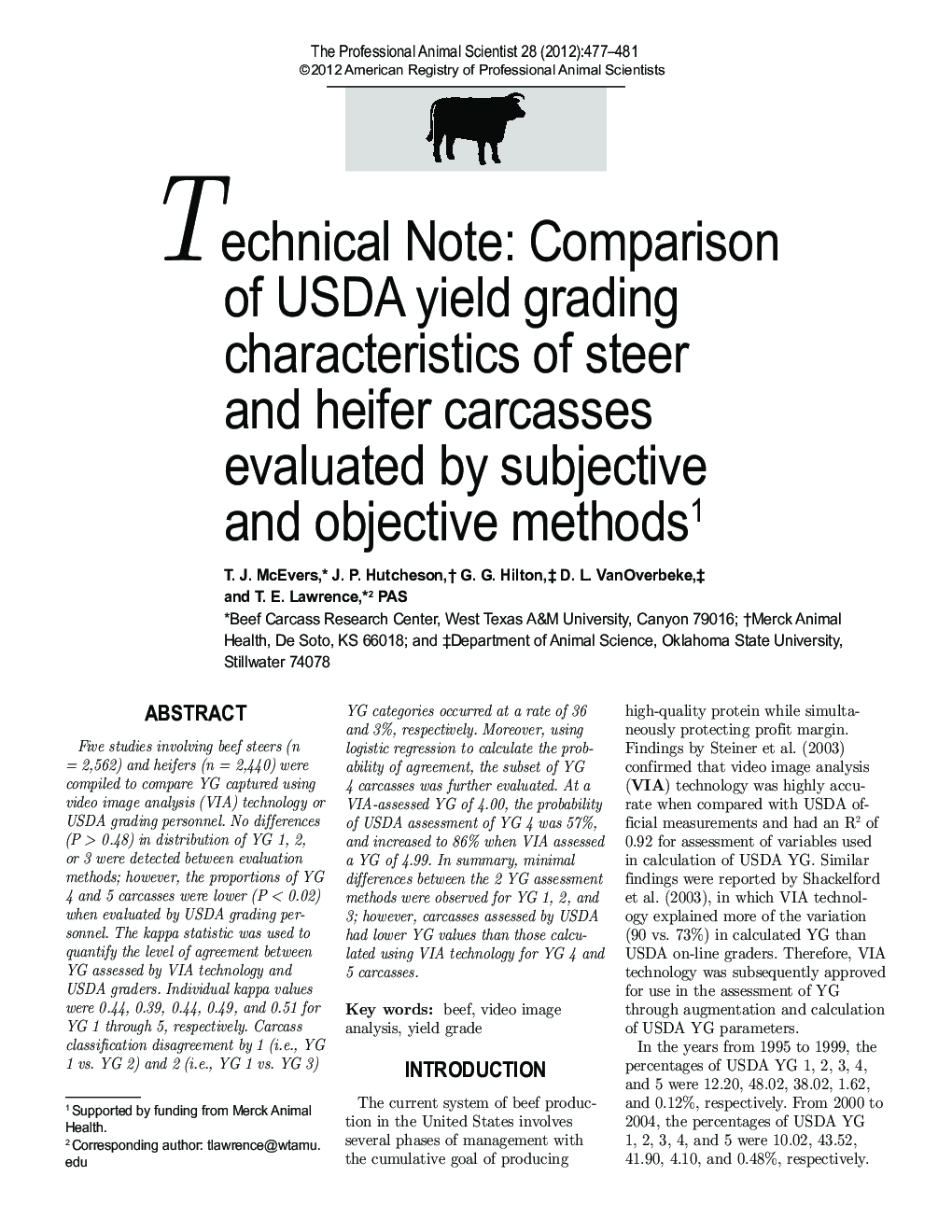| Article ID | Journal | Published Year | Pages | File Type |
|---|---|---|---|---|
| 2454131 | The Professional Animal Scientist | 2012 | 5 Pages |
Abstract
Five studies involving beef steers (n = 2,562) and heifers (n = 2,440) were compiled to compare YG captured using video image analysis (VIA) technology or USDA grading personnel. No differences (P > 0.48) in distribution of YG 1, 2, or 3 were detected between evaluation methods; however, the proportions of YG 4 and 5 carcasses were lower (P < 0.02) when evaluated by USDA grading personnel. The kappa statistic was used to quantify the level of agreement between YG assessed by VIA technology and USDA graders. Individual kappa values were 0.44, 0.39, 0.44, 0.49, and 0.51 for YG 1 through 5, respectively. Carcass classification disagreement by 1 (i.e., YG 1 vs. YG 2) and 2 (i.e., YG 1 vs. YG 3) YG categories occurred at a rate of 36 and 3%, respectively. Moreover, using logistic regression to calculate the probability of agreement, the subset of YG 4 carcasses was further evaluated. At a VIA-assessed YG of 4.00, the probability of USDA assessment of YG 4 was 57%, and increased to 86% when VIA assessed a YG of 4.99. In summary, minimal differences between the 2 YG assessment methods were observed for YG 1, 2, and 3; however, carcasses assessed by USDA had lower YG values than those calculated using VIA technology for YG 4 and 5 carcasses.
Keywords
Related Topics
Life Sciences
Agricultural and Biological Sciences
Animal Science and Zoology
Authors
T.J. McEvers, J.P. Hutcheson, G.G. Hilton, D.L. VanOverbeke, T.E. PAS,
